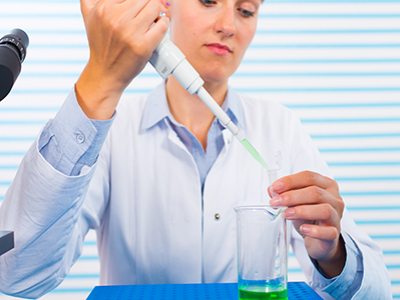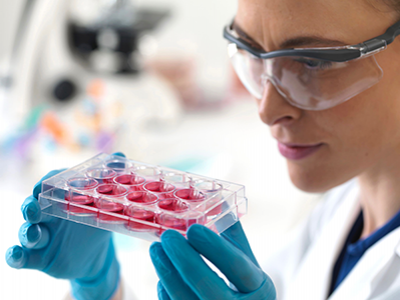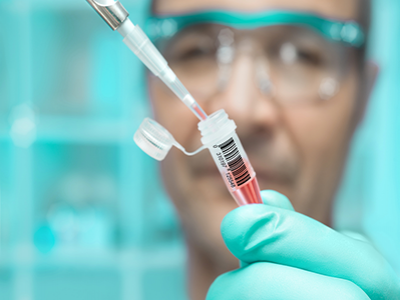UCF Patent
It is also accepted that stem cells have their regenerative effects via the chemical signalling molecules that they produce. These cytokines, chemokines, exosome and hormones number in the several hundreds and are known to change their total constituents both in type and volume as the body ages.
The factors that trigger these rejuvenation programs at the cellular level are cytokines- the chemicals produced by many cell types in the body. Cytokines are involved in autocrine signalling ( internal cell signalling), paracrine signalling ( cell to cell local signalling) and endocrine signalling ( effecting cells distant from themselves).
The classification of the cytokines: according to the structure and function, cytokines can be divided into interleukins, interferons, tumor necrosis factors and colony stimulating factor, chemotaxis, and growth factors.
We have always believed that cord blood cells are a rich source of regenerative cytokines. In a series of indications, these regenerative cytokines can easily imitate and replace the use of stem cells in the therapeutic space. It has been recognized that stem cells can regenerate through their chemical signaling molecules (cytokines). There are hundreds of these cytokines, chemokines, exosomes (complexes of more than five exonucleases) and hormones, and their total composition varies in type and volume as the body ages.
Umbilical cord plasma contains more than 700 cytokines, chemokines and growth factor proteins, which coordinate cell growth, cell proliferation and differentiation/maturation. Although there are many kinds and quantities of these proteins, each protein can promote its own series of biological effects, ranging from specificity to extensive overlapping activities.
It will be some time until we are able to not only differentiate which combination of the over 700 cytokines in human blood actually trigger the age reversal mechanism and a whole lot longer to define the time sequence over which they operate. The number that defines the various combinations possible with 700 separate biological cytokines is staggering. Like the human genome, there is no single cytokine candidate acting as the 「silver bullet" cytokine responsible for this anti-aging effect.
Abundant evidence, Many diseases are originated from aging, including cardiovascular, Alzheimer's and Parkinson's disease along with osteoporosis and osteoarthritis due to both age dependent senescence in tissue specific stem cells and changes in their microenvironment. Aging is related to the accumulation of degenerative factors emitted by senescent cells, such as free radicals, proteases, cytokines, and reactive oxygen species (ROS), which lead to increased rates of apoptosis ( programmed cell death) and degeneration.
Aging is related to loss of functional stem cells and its accompanying loss of tissue and organ regeneration potentials.Stem cells are the repair systems of the body. Once stimulated, they set about changing the tissue environment into one that can initiate repair. . If we can find ways to recover cellular potential from the senescence that occurs during the aging process, we can delay/reverse the aging of the patient.
Local microenvironments and niche cell interactions are indispensable for maintaining stem cell function. An age-related decrease in environmental factors is as important as an age-related decline in endogenous stem cell activity. Thus, increases in local and systemic factors have the potential to restore regenerative capacity of aged cells and maintain tissue viability.
UCF- where platelets in the plasma of the patient are made to release the large numbers of growth factors and beneficial cytokines contained in the alpha granules in them- has been used for many years as a way to decrease the healing time of a number of musculoskeletal diseases and has been used extensively in patients for sports injuries and to decrease the pain and inflammation of osteoarthritis.It has also been used in the cosmetic industry as a way to "naturally" stimulate the repair of aging skin and stimulate the growth of hair.
UCF utilizes all the cytokines from the cord blood of the newborn as well as containing all the cytokines from the umbilical cord blood platelets of the new born, thus maximizing the cytokine array that is directed towards growth and repair in the rapidly growing child. The advantage over simple patient derived PRP is that as the patient ages so does their cytokine array that constitutes the cellular milieu in which all the body』s cells reside.As the patient ages their cytokine array becomes directed at inflammation and senescence NOT the growth and repair as directed by the cytokine array of the new born.
Young blood factors, when injected locally and systemically, will stimulate the healing cascade and have been shown to shorten the healing time of many acute and chronic injuries. Recently, in animal models, both in vivo and in vitro, concentrated cytokine array products have been shown to produce many beneficial effects on a variety of body systems and the body as a whole.
These effects have been shown, in animal models, to be statistically significant and include:
· a. In vitro tests on both ADSC s and BMSC treated with blood derived cytokines result in increase cellular proliferation and colony formation.
· b. Less adipogenesis and more osteogenesis occurred
· c. Senescence biomarkers were downregulated (p16,p19,p53) with an upregulation of sirt1,IGF-1 and c-fos
· d. Inherent freee radical scavaging systems ( SOD,GPx,Catalase) were increased
· e. In vivo animal tests, blood derived cytokine systemically treated mice showed greatly improved phenotypic markers ( skin glossiness, dermal collagen density, cataracts and lordokyphosis of the spine) These treated animals showed significant delayed aging phenotypes as well as less adipose accumulation and greater bone density
· f. In vitro observation of the treated animals showed stronger resistance to oxidative stress
· g. Importantly, treated animals delayed the exploratory behavioral signs of aging. Treated animals were more inclined to explore their surroundings than those untreated.
· h. Treated animals had less accumulation of cellular beta amyloid that is the hallmark of Alzheimer』s disease.
Overall, in these systemically treated animals, there was significantly enhanced stem cell growth and differentiation, recovered cellular senescence, extended lifespan and recovered phenotypic traits ( exploratory).Blood derived cytokine treatments offer a potential therapy for aging related diseases via in vivo stem cell rejuvenation and the potential to delay functional decline and extend life span in aged animals.
UCF umbilical cord blood cytokines are derived from umbilical cord plasma of zero-year-old infants, which collects blood group sources from the United States of America.Prepared from the umbilical cord blood collected from donors during the birthing process. All donors sign an informed consent and are screened for the following transmissible diseases HIV, hepatitis B & C, HTLV, Syphilis and CMV. All samples are tested for bacterial and fungal contamination to ensure sterility of the product. After entering Australia, all cord blood samples are further tested in a NATA accredited facility for the same transmissible diseases. cGMP treatment ensures the release of platelet cytokines from umbilical cord and a series of anti-inflammatory/growth-promoting cytokines from umbilical cord produce umbilical cord serum. Samples can be individual collected or pooled into blood groups – A, B, O, AB.
More importantly, PURECELLTM has standardized umbilical cord plasma samples under the approval of the Australian government and the supervision of the top inspection agency, TGA. The powder under RT has a shelf life of 2 years and is suitable for shipment. To make injection diluted to 40 ℃ below can keep active for a month. Prior to freeze-drying and filtration sterilization, all samples were treated to maximize the levels of growth factors in platelets, neutrophils, and macrophages -- a proprietary process in which PURECELL UCF has higher levels of growth factors.


 UCF OA
UCF OA  UCF RA
UCF RA  UCF Chroni
UCF Chroni  UCF Hypert
UCF Hypert  UCF Ovaria
UCF Ovaria 
